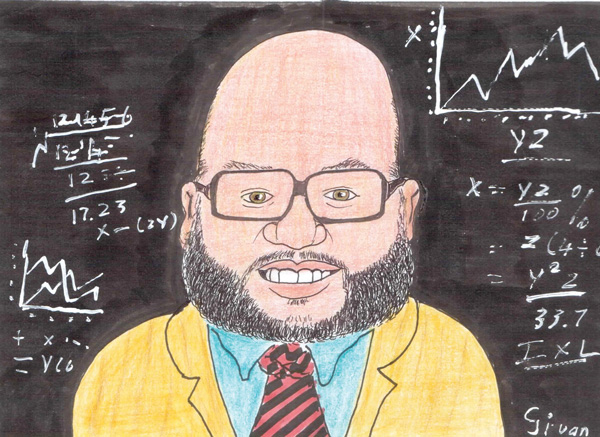
Cultivating Creativity – how to generate better and more creative ideas for problem solving in enterprise management

By Rikus Grobler, www.nis.co.na, [email protected] .
I am currently on the topic of creative thinking, or coming up with creative solutions to complex problems or to exploit lucrative opportunities. In the previous delivery I shared some basic pointers on improving one’s own creativity, based on the premise that everybody is creative – just in different areas of interest – and it is a skill that can be learned and improved upon.
In short, I advised that creativity is firstly an attitude: You must believe that you can be more creative; don’t wait for the best idea, start with what you got and take action on an idea and more ideas will start to flow; creativity is a team sport, two heads are better than one; good ideas start with good problems; incubation works, give your mind time to think; and lastly, follow your curiosity.
Even after a lot of research and progress in this field, “creativity on demand” is still an elusive aspiration for mankind, so in this delivery I want to share some more advice on how to generate better and more creative ideas in your workplace.
Improving creative thinking
During my PhD research I came across a thought-provoking criticism on individual creativity research. Nayak (2008: 423), argued the case that a major limitation of the individual creativity research is its reliance on studies of the psychology of the creative person.
Nayak pointed out that organisational researchers have uncritically drawn on creativity studies that are based on “artists, poets and children”, to see whether organisations have an impact on creativity.
There is ample evidence of models of creative thinking which in fact have been used in predicting creativity in engineers, children, artists, and writers. Nayak reasoned that by posing the question in this manner, researchers have self-evidently constructed the organisational setting as inhibiting creativity, meaning, “…they assume that outside the organisational environment creativity would have flourished”.
He referred to this phenomenon as “psychology bias”, and further reasoned that the major limitation of psychology bias in studies on creativity in organisations is that they predefine creative people within organisational settings rather than as managers who have to be inventive and resourceful.
He rightfully called attention to the fact that for managers, the organisational context can vary from stability and routine to demands of transformation and change and both these scenarios impact on individual ingenuity, but current studies do not provide a way of comprehending these managerial realities.
Instead, the organisational realities which managers face are seen as the problem and inhibitor of “creativity”. Nayak concluded that: “suggestions from the existing literature that creativity in organisations requires managers to be more playful, childlike or mimic the settings of idealised creative people such as poets, artists and scientists does not reflect managerial creativity.”
Why refer to academic research when discussing the topic of creativity?
I will probably take some criticism for this statement, but I share Nayak’s view that “managerial creativity” is different from “artistic creativity” and I am of the opinion that there is a lot of “fluff” in the advice given on improving creativity.
So, instead of advising you on some bohemian method to improve creativity, I would rather give some concise practical steps that you can take. I prefer this approach because creativity (idea generation) in the context of organisational innovation is typically bound by practical restraints, and it is the process through which employees have to develop novel and useful solutions to challenges and problems encountered in pursuit of work objectives.
So, here are my top five proven actions that you can take to improve your idea generation abilities:
1. Ask a lot of questions. Ask “why” and “how” to determine if there’s a better way to solve a problem.
2. Recruit a partner. Bounce ideas off another person – someone you’re comfortable with but who will challenge you when necessary. With another person involved, you’re not limited to your own experience and perspective.
3. Incubation. Relax your mind. Give your subconscious a chance to work by turning your brain off from time to time. Don’t focus on work or solving problems constantly. Go take a walk or take time to exercise and relax, and give yourself permission to think about other things. Creativity relies on associations and connections that may not be obvious and may not come to us unless we let our minds wander.
4. Impose constraints. Yes, there is research that proves this. When you have less to work with, you actually begin to see the world differently. With constraints, you dedicate your mental energy to acting more resourcefully. When challenged, you figure out new ways to be better.
5. Joke around. Yes, there is a very strong connection between humour and creativity. Have fun, laugh, and turn things around and upside down, just get out of the rut and don’t take things so serious.
Next Time
So now that you have generated your creative idea, it will scare the “naysayers” when you propose it, because it is not “the way we have always done it”. Next time I will discuss how to properly pitch an idea to get to a “yes” for implementation.
I conclude with a quote from the master of being creative by having fun, Dr Seuss: “Think left and think right and think low and think high. Oh, the things you can think up if only you try!”.
Sources
Nayak, A. 2008. Experiencing creativity in organisations: A practice approach. Long Range Planning, 41(4), 420-439.













































